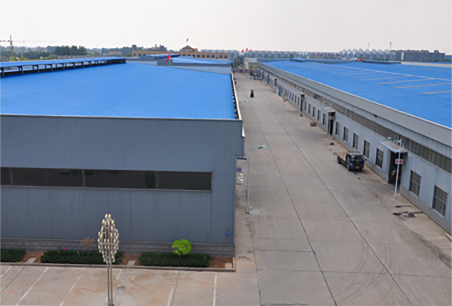Understanding Metal Bar Grating An Overview
Metal bar grating is a highly versatile and functional product widely used across various industries for flooring, walkways, platforms, and even architectural designs. It consists of a series of parallel metal bars welded or mechanically interconnected to create a sturdy and durable surface. This grating has gained popularity because of its unique advantages, including strength, durability, and ease of installation.
One of the primary materials used in metal bar grating is steel, although aluminum and fiberglass are also common alternatives. Steel grating is particularly favored for its high load-bearing capacity and resilience in harsh environments. Depending on the specific requirements of a project, galvanized or stainless steel may be chosen for corrosion resistance, enhancing the longevity of the grating in outdoor or chemical exposure settings. Aluminum grating, while lighter, offers excellent resistance to oxidation, making it ideal for applications where weight is a concern without compromising on strength.
The design of metal bar grating is typically characterized by its open surface, which allows for water drainage and prevents the accumulation of debris. This feature is particularly beneficial in environments where safety and cleanliness are critical, such as in industrial facilities, petrochemical plants, and waste water treatment plants. The open design not only promotes hygiene but also maximizes airflow and light penetration, contributing to a safer and more pleasant working environment.
Installation of metal bar grating is relatively straightforward. It can be easily cut to size, allowing for customization to fit specific dimensions and configurations. Typically, installation involves attaching the grating to a supportive framework, often made of steel or concrete, using various fastening methods such as clamps or welds. This ease of installation makes metal bar grating a cost-effective solution for many construction and maintenance projects.
metal bar grating

Furthermore, metal bar grating is available in various configurations, including different spacing between bars, varying thicknesses, and surface textures. These options enable designers and builders to select the most suitable grating for their needs, whether it be for heavy machinery walkways, stair treads, or elevated platforms. The choice of surface texture can also influence safety; for example, serrated grating provides additional grip, making it a preferred option for environments prone to slipping hazards.
Safety is a paramount concern in industrial and commercial settings, and metal bar grating addresses this issue effectively. It provides a stable walking surface while ensuring visibility of the underlying structure, which is crucial in preventing trips and falls. Additionally, its ability to withstand heavy loads makes it compliant with various safety regulations and standards.
In terms of aesthetics, metal bar grating can be fabricated in various finishes, including painted and powder-coated options, allowing it to blend in with the surrounding architecture or stand out as a design feature. This versatility makes it a popular choice not only for functionality but also for visual appeal in public spaces, pedestrian pathways, and building facades.
In conclusion, metal bar grating is an indispensable solution in a wide array of applications, owing to its outstanding strength, durability, and versatility. Its ability to provide a safe and reliable walking surface while allowing for drainage and light penetration makes it suitable for both industrial and commercial environments. As industries continue to evolve, the demand for innovative and effective solutions like metal bar grating will undoubtedly persist, ensuring its relevance and application for years to come.
-
The Best Metal Mesh Solutions: Expanded Aluminum Metal vs. Expanded Stainless Steel Metal
NewsSep.10,2024
-
Round Perforated Sheets vs. Hexagonal Perforated Sheets vs. Embossed Perforated Sheet Metal
NewsSep.10,2024
-
Perforated Metal Sheets
NewsSep.10,2024
-
Experience The Excellence Of Stainless Steel Grating
NewsSep.10,2024
-
Discover the Versatility Of Metal Mesh Expanded Forming Machines
NewsSep.10,2024
-
Discover The Advantages Of Steel Grating For Sale
NewsSep.10,2024
Subscribe now!
Stay up to date with the latest on Fry Steeland industry news.

